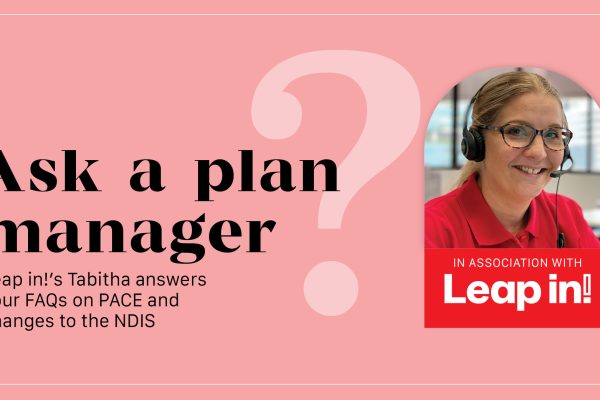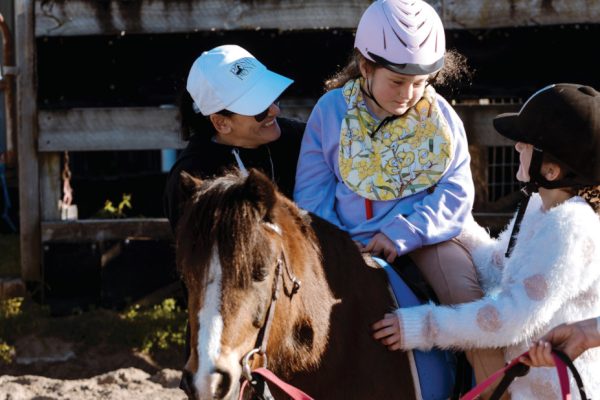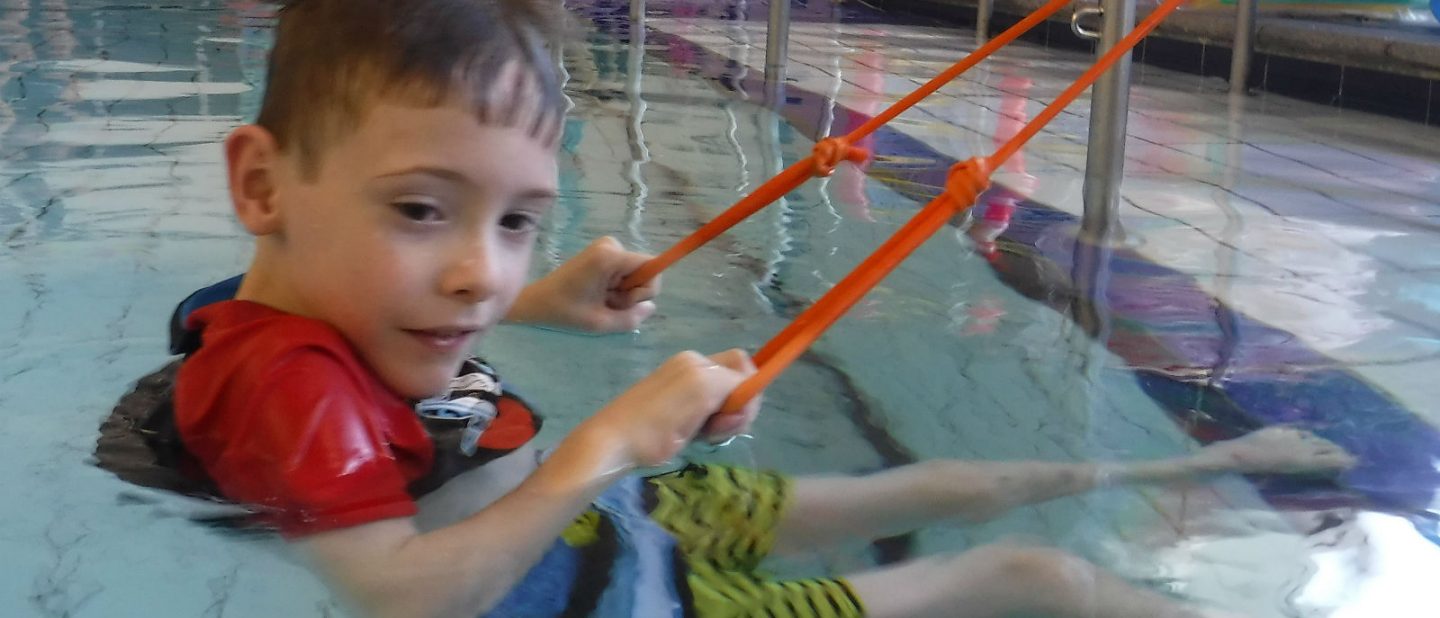
Hydrotherapy: what is it and how can it help your child?
by Judy Larsen, BPhty
Aquatic Physiotherapy, or hydrotherapy as it is also known, is one of the many therapeutic interventions available for children with a disability.
Whether a child has cerebral palsy, an acquired brain injury, autism, a seizure disorder, Down syndrome, Spina Bifida, Muscular Dystrophy, SMA, cancer, a hypermobility syndrome or pain associated with arthritis, Aquatic Physiotherapy has something to offer.
Children recovering from cancer, orthopedic surgeries or “rehabbing” after trauma or accident also benefit.
When combining the skills of a physiotherapist with paediatric knowledge and aquatic training, many parents see their children achieve outcomes and milestones during aquatic physiotherapy sessions that will help achieve their land-based goals.
A full assessment and goal setting with the child and their parents/caregivers will always precede treatment. Gaining a child’s confidence and cooperation is essential.
Benefits of immersion in water include the support and decreased weight bearing that water offers. Children sometimes walk in the water before they walk on land; they don’t have to support their full body weight and the fear of falling diminishes.

Children with severe physical challenges, restricted movement and associated pain and stiffness can float on the pool surface in specially designed equipment and either maximise the movement they have or be moved and facilitated by their physiotherapist to maintain joint range.
Water can both assist or resist a movement, so those with complex neurological issues can often move more easily in the water, while those who require strength and stability can work hard while protecting loose or painful joints. A range of fun equipment allows us to work on specific strengthening activities for the more active to strengthen upper limb, lower limb and core.
There are many ways aquatic physiotherapy can help with pain while encouraging movement and exercise. Most people are aware of older people using “hydro” to help relieve aches and pains, but not many are aware that the same pain reducing effect helps children with pain causing syndromes or the pain that might commonly affect older children with complex cerebral palsy or similar conditions.
The water also has a sensory benefit for children. Some children with sensory processing disorders may struggle with sensory overload. The sensory and pressure effect of water immersion may dampen over-stimulation, reduce stress caused by overstimulation and have a calming effect. Studies looking at aquatic intervention in children with ASD found improved social interactions and behaviours. An extra benefit is that water exercise can assist in weight-control, enhance sleep patterns and decrease anxiety.
In early intervention, aquatic physiotherapy often aims at encouraging milestones such as head control, rolling, sitting, upper limb function, 4-point kneeling and sit-to-stand. It is definitely a motivation to hold your head up if you think you might get wet if you relax. We hear parents commenting that on land kids will often put their head down on the mat to rest but in hydro they will often hold it up for longer in a fun filled (and wet) environment.
We have had children crawl for the first time on the pool ramp in 10cm of water or sit to stand when supported by water which acts to reduce the weight and therefore the effort the child has to make to stand.
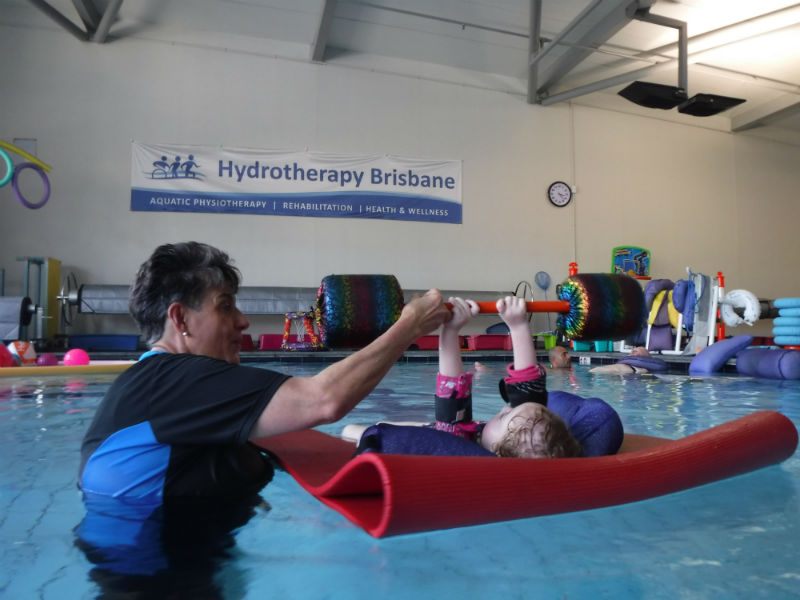

AQUATIC PHYSIOTHERAPY HAS THE POTENTIAL TO:
- improve range of movement
- improve muscle strength and core stability
- facilitate functional movement (e.g. crawling and walking) and achieve milestones
- allow easier muscle lengthening (stretching) with less pain
- help manage pain
- improve breath control and respiratory function
- decrease stereotypical hand movement
- increase activity and fitness levels
- improve motor planning, coordination and problem solving
- Improve oral-motor skills (lip closure, bubbles, breath holding and breath control)
- improve cardiorespiratory endurance and exercise capacity
- improve social skills and behaviours
- be a safe low-impact exercise for children with hypermobility or similar issues
- promote relaxation
- assist sensory integration
- improve water safety skills, confidence and water enjoyment enabling a positive association with water activity
Skilled handling and use of appropriate pool equipment allows children to move, roll, twist and turn in the pool. This can stimulate the vestibular system and immersion can enhance sensory processing.
As children get older sometimes land exercise can put too much stress on hypermobile joints or on ankles and knees where limb alignment may be affected by neurological conditions.
Kids who learn to love the water and to understand the range of exercises that can be done in water as well as swimming will benefit for life.
Some kids aren’t swimmers; they don’t like to get their ears, hair or eyes wet, or will
never be entirely safe. “Deep water” or vertical exercise, such as running or water-walking is a winner for these kids, just as it is for any adult population and it is something the kids can continue to do as they age.
Physios are often asked by parents about swimming lessons; learning water skills and confidence is invaluable, but initially achieving milestones such as head control, rolling, sitting, crawling and even walking are likely the major goals. If the development of these are delayed then swimming skills are likely to be too. If time and money are limited you can delay swimming lessons until head control, arm and leg function are developing. Aquatic physio sessions will enhance water confidence and most physios will be able to start the swimming process. Some children are referred to aquatic physiotherapy when they do not succeed at community swimming lessons. As a movement expert your physio will often be able to modify and progress your child’s swimming, just as they do with their function on land.
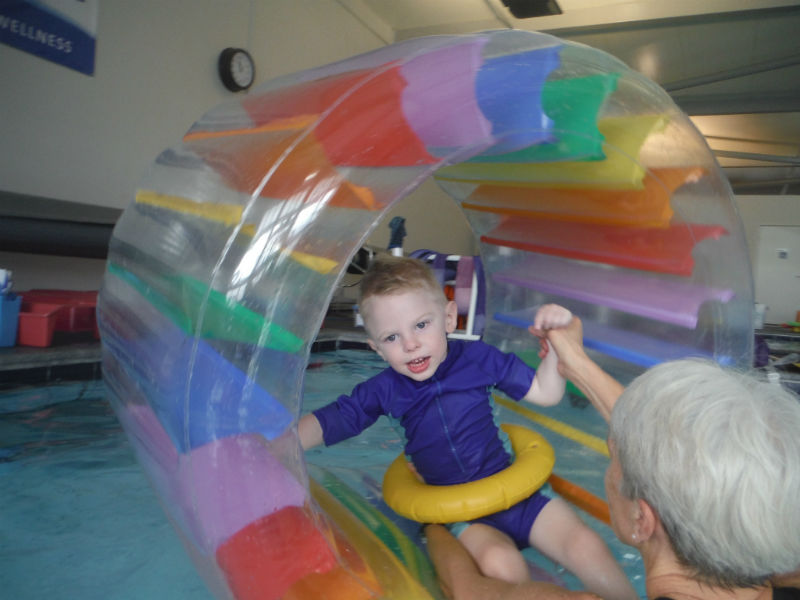

Parents can participate in sessions to learn aquatic handling skills; pool sessions at home during the warm summer months can enhance “therapy hours” to increase the potential for improvement.
As with any activity there are risks but with a good assessment and a skilled therapist, risk is diminished. Children with complex multiple disabilities, poor head control, weak neck muscles, seizures, some wounds, incontinence, colostomies, gastrostomies, tracheostomies, catheters and even ventilators can, and do, participate in one-on-one aquatic physiotherapy sessions.
In Queensland, the Betterstart program allowed some kids with disabilities to access aquatic physiotherapy but the advent of NDIS allows many more to do so. Physiotherapy comes mainly under the “Capacity Building – Improved Daily Living” category. As an Aquatic Physiotherapist who runs a pool not only are we seeing an increase in kids accessing the water though NDIS but also an older population (post school through to 65 years) with special needs who now also have access to the water for a range of benefits.
Making therapy seem like fun is easy in the pool and as a result, children often work harder and comply better with their therapy program.
Judy Larsen BPhty is a physiotherapy graduate of the University of Qld. Having worked in all health sectors she now runs a private physiotherapy practice incorporating two purpose-built hydrotherapy pools, land gym and treatment areas. Hydrotherapy Brisbane is Australia’s largest independently run hydrotherapy facility treating participants from 3 months to 103 years with a variety of conditions. Visiit hydrotherapybrisbane.com.au or call 07 3263 1515 to find out more.




